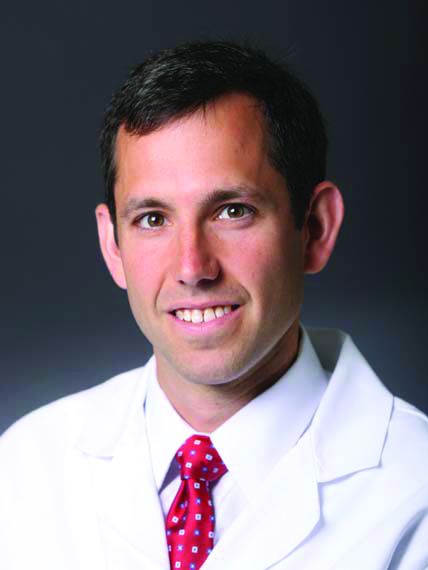User login
If veterans who need abdominal aortic aneurysm surgery are fully versed in both open and endovascular procedures, will they be happier with their choice?
To prevent “buyers’ remorse,” a new study at VA centers is examining if decision aids can help align patient preference with the type of AAA surgery. Enrollment begins at 20 VA centers in April.
PROVE-AAA – PReference for Open Versus Endovascular AAA Repair – has received $1.1 million in funding from the VA’s Health Services Research and Development branch.
AAA is a common condition among veterans, prompting nearly 2,000 surgical repairs yearly in VA hospitals.
“Our hypothesis is that vets concerned about pain or disability will prefer endovascular repair, while veterans who prioritize concerns about durability will prefer open repair,” said Dr. Goodney. Aligning preferences with treatments will ultimately improve the quality of VA surgical care, he said.
At each participating center, investigators will identify 12 veterans with an AAA at least 5 centimeters in diameter that can be treated by either repair. At 10 sites, patients will receive decision-making help, plus a pre-survey and survey. At 10 control sites, veterans will receive only the survey. Patients will be followed for two years; total project time is four years.
Collaborator Dr. Kristine Orion hopes the study “will help me to better understand why they would choose one surgical approach over the other. I believe many actually prefer open surgery to an endovascular one to avoid lifelong radiological surveillance.”
This is the first such study in the United States, said Dr. Goodney. A previous non-randomized study in England discovered that when patients without a treatment preference received balanced, in-depth information, more than two out of three reached a decision they described as “definitive,” he said. Nearly 20 percent preferred open surgical repair.
Findings will be reported to the National Surgery Office Vascular Advisory Board “to help ensure veterans’ preferences remain at the center of AAA treatment decisions,” Dr. Goodney said.
If veterans who need abdominal aortic aneurysm surgery are fully versed in both open and endovascular procedures, will they be happier with their choice?
To prevent “buyers’ remorse,” a new study at VA centers is examining if decision aids can help align patient preference with the type of AAA surgery. Enrollment begins at 20 VA centers in April.
PROVE-AAA – PReference for Open Versus Endovascular AAA Repair – has received $1.1 million in funding from the VA’s Health Services Research and Development branch.
AAA is a common condition among veterans, prompting nearly 2,000 surgical repairs yearly in VA hospitals.
“Our hypothesis is that vets concerned about pain or disability will prefer endovascular repair, while veterans who prioritize concerns about durability will prefer open repair,” said Dr. Goodney. Aligning preferences with treatments will ultimately improve the quality of VA surgical care, he said.
At each participating center, investigators will identify 12 veterans with an AAA at least 5 centimeters in diameter that can be treated by either repair. At 10 sites, patients will receive decision-making help, plus a pre-survey and survey. At 10 control sites, veterans will receive only the survey. Patients will be followed for two years; total project time is four years.
Collaborator Dr. Kristine Orion hopes the study “will help me to better understand why they would choose one surgical approach over the other. I believe many actually prefer open surgery to an endovascular one to avoid lifelong radiological surveillance.”
This is the first such study in the United States, said Dr. Goodney. A previous non-randomized study in England discovered that when patients without a treatment preference received balanced, in-depth information, more than two out of three reached a decision they described as “definitive,” he said. Nearly 20 percent preferred open surgical repair.
Findings will be reported to the National Surgery Office Vascular Advisory Board “to help ensure veterans’ preferences remain at the center of AAA treatment decisions,” Dr. Goodney said.
If veterans who need abdominal aortic aneurysm surgery are fully versed in both open and endovascular procedures, will they be happier with their choice?
To prevent “buyers’ remorse,” a new study at VA centers is examining if decision aids can help align patient preference with the type of AAA surgery. Enrollment begins at 20 VA centers in April.
PROVE-AAA – PReference for Open Versus Endovascular AAA Repair – has received $1.1 million in funding from the VA’s Health Services Research and Development branch.
AAA is a common condition among veterans, prompting nearly 2,000 surgical repairs yearly in VA hospitals.
“Our hypothesis is that vets concerned about pain or disability will prefer endovascular repair, while veterans who prioritize concerns about durability will prefer open repair,” said Dr. Goodney. Aligning preferences with treatments will ultimately improve the quality of VA surgical care, he said.
At each participating center, investigators will identify 12 veterans with an AAA at least 5 centimeters in diameter that can be treated by either repair. At 10 sites, patients will receive decision-making help, plus a pre-survey and survey. At 10 control sites, veterans will receive only the survey. Patients will be followed for two years; total project time is four years.
Collaborator Dr. Kristine Orion hopes the study “will help me to better understand why they would choose one surgical approach over the other. I believe many actually prefer open surgery to an endovascular one to avoid lifelong radiological surveillance.”
This is the first such study in the United States, said Dr. Goodney. A previous non-randomized study in England discovered that when patients without a treatment preference received balanced, in-depth information, more than two out of three reached a decision they described as “definitive,” he said. Nearly 20 percent preferred open surgical repair.
Findings will be reported to the National Surgery Office Vascular Advisory Board “to help ensure veterans’ preferences remain at the center of AAA treatment decisions,” Dr. Goodney said.



